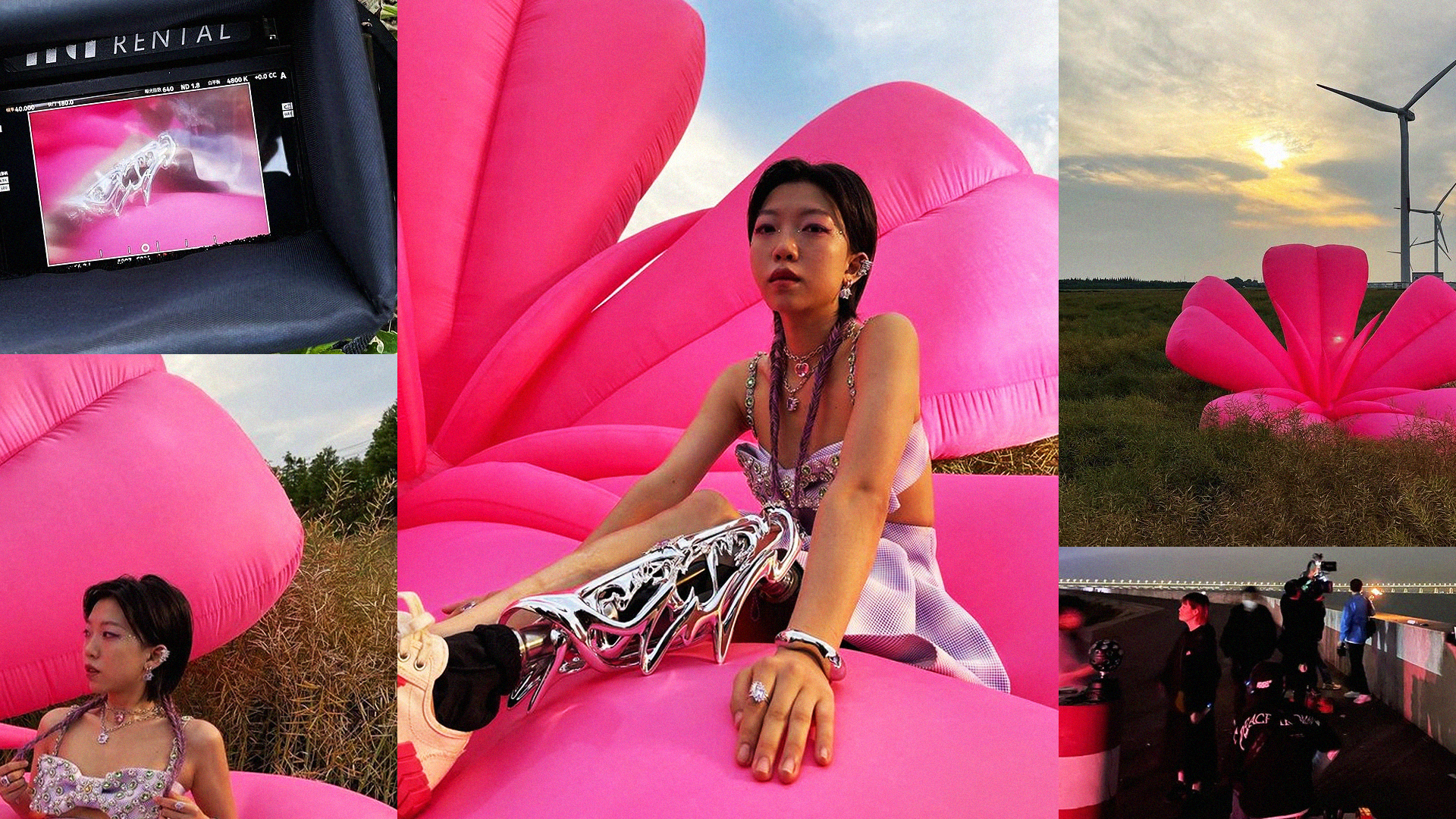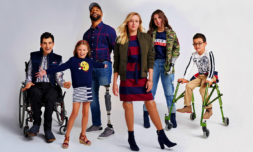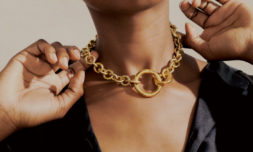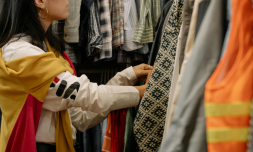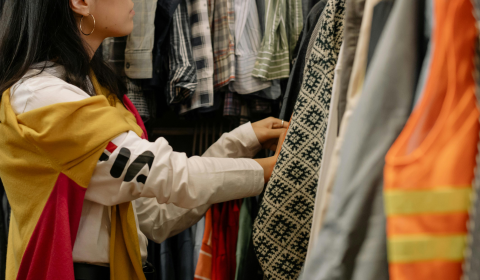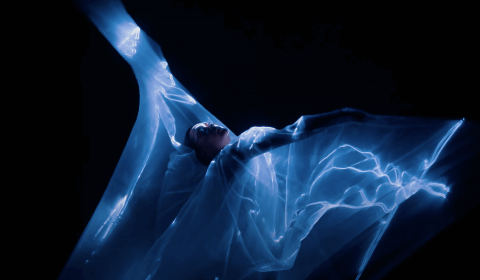YVMIN has collaborated with model Xiao Yang on a collection of statement prosthesis accessories in the hope that people with disabilities will feel better included in fashion.
Regardless of strides taken in recent years to improve upon the absence of disability representation in fashion – namely major brands recognising their responsibility to support the community by featuring them in campaigns and developing adaptive clothing lines – industry-wide ableism prevails.
At fault of propagating discrimination in favour of the able-bodied, retailers and designers alike continue to churn out garments that don’t cater to those suffering from chronic conditions or impairments.
When they do, the pieces are often inclined to functionality, leaving the style component overlooked.
It’s this, alongside a desire to challenge stereotypes, that model Xiao Yang (who’s been wearing a prosthetic leg for twenty years) is seeking to change with her YVMIN collaboration.
‘In high school, when I was very eager to dress up, I thought that the prosthetic limbs affected my external beauty,’ she told Vogue in an interview. ‘Wearing a prosthesis caused one side of my buttocks to be deformed. I felt unsafe wearing tight pants or tops that were shorter than the buttocks – like I was being exposed.’
As of late, however, Yang has been experimenting more with style, deeming her prosthetic a unique form of self-expression instead of something unpleasant to be hidden away.
View this post on Instagram
Taking this notion on board, Xiaoyu Zhang and Min Li (the Chinese jewellery company’s co-founders) discovered their inspiration: to treat prosthetics like wearable art.
‘We think it is only natural to decorate any part of our body, prosthetic as well,’ explains Zhang.
‘This project tells everyone that wearing a prosthesis is a fact that cannot be changed – but wearing a prosthesis that looks gorgeous is also achievable.’
YVMIN, renowned for its experimental approach to jewellery design, describes its output as a ‘body accessory laboratory.’ Though Zhang and Li typically create delicate, feminine pieces, they saw this as an opportunity to step out of their comfort zones and work within an entirely new field.
One that gives people more choice, no matter which group they belong to.









